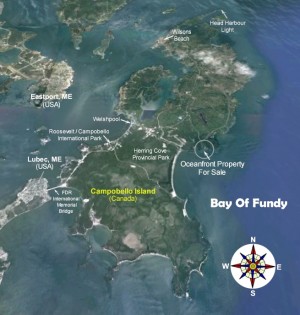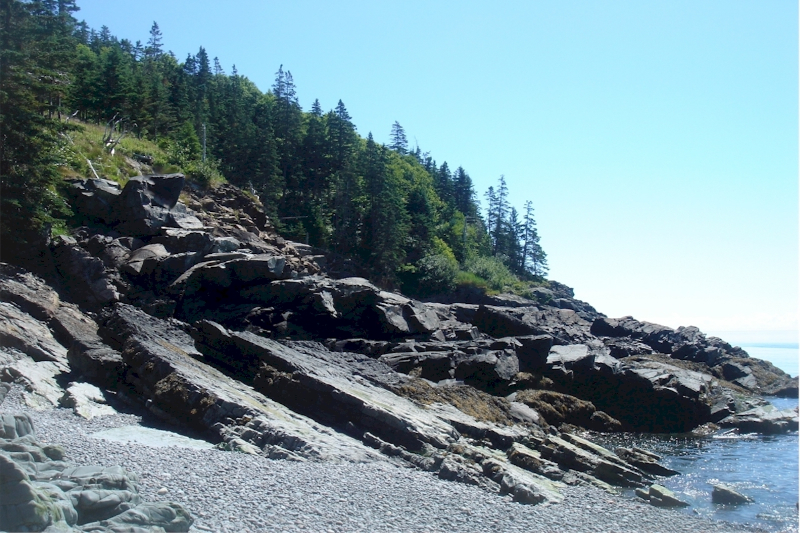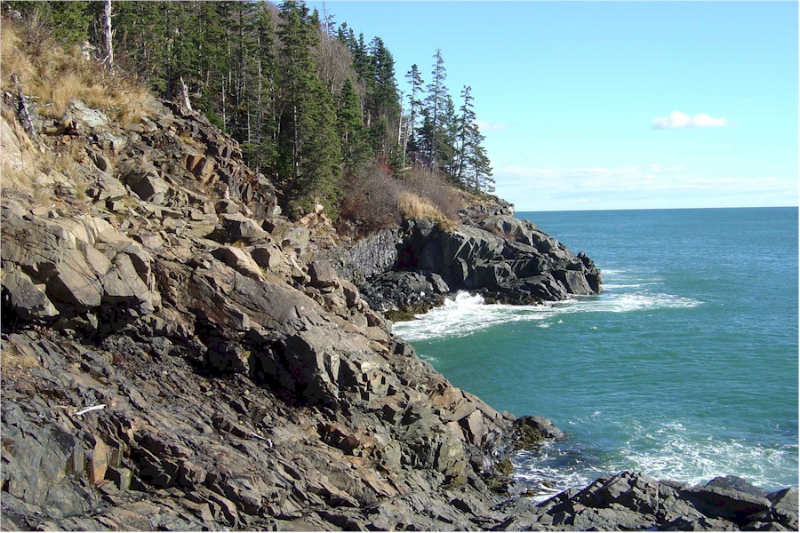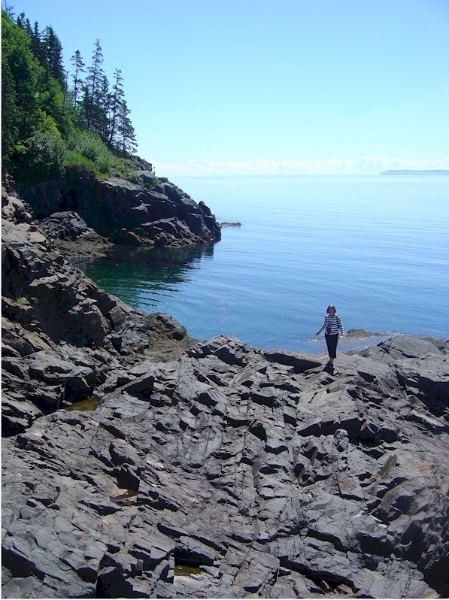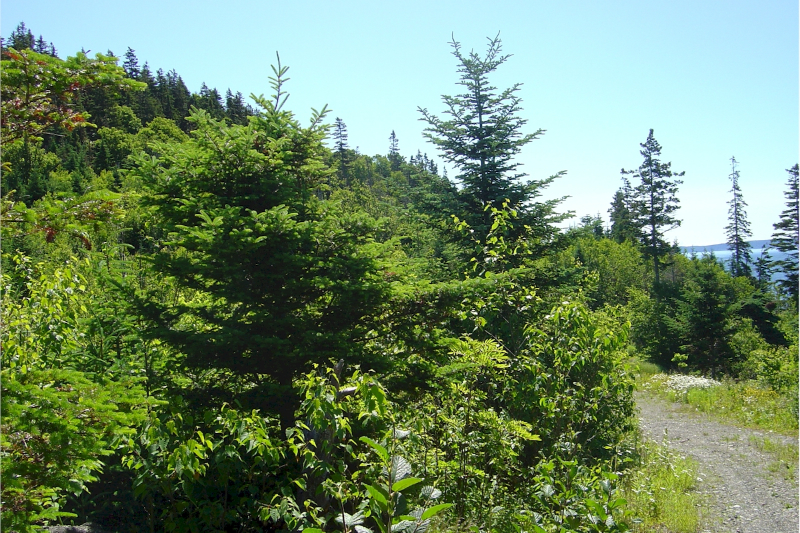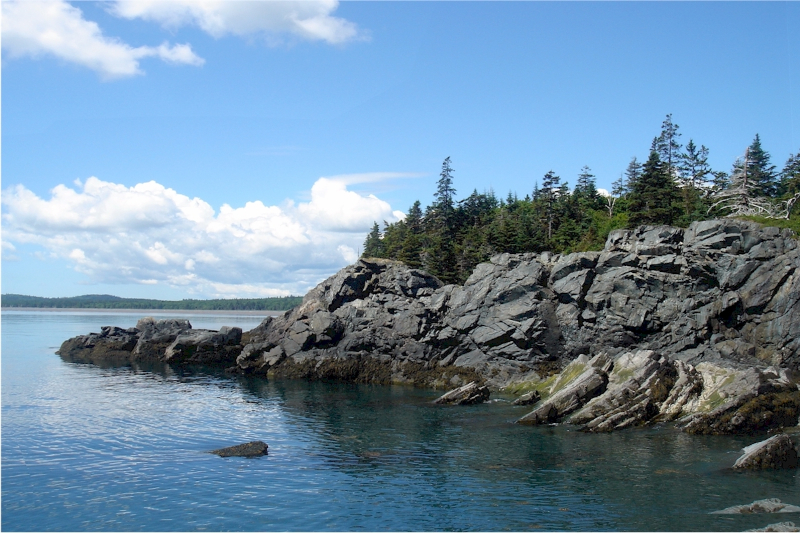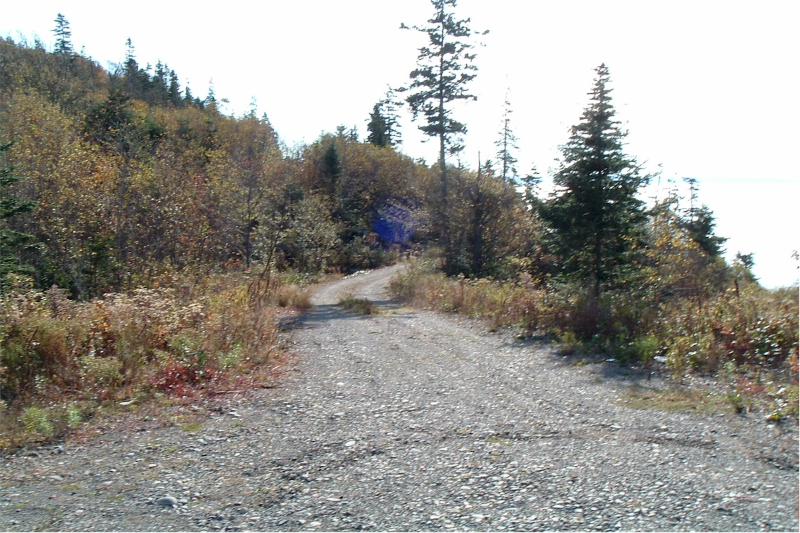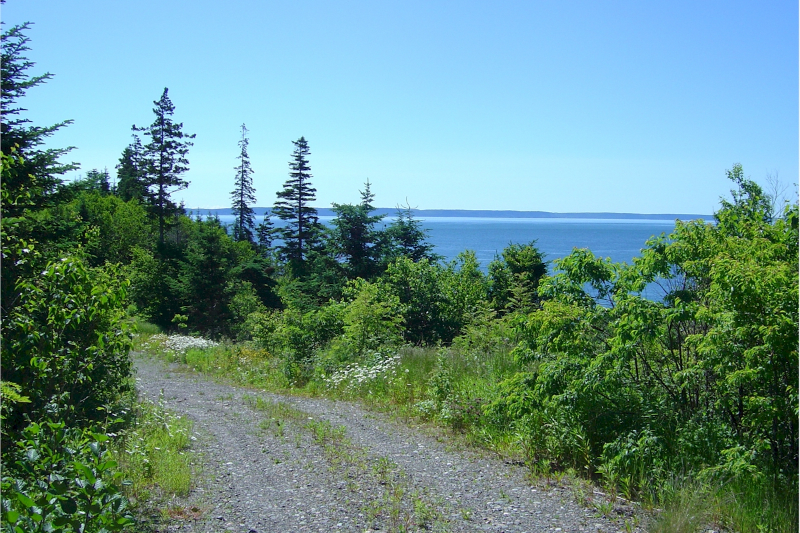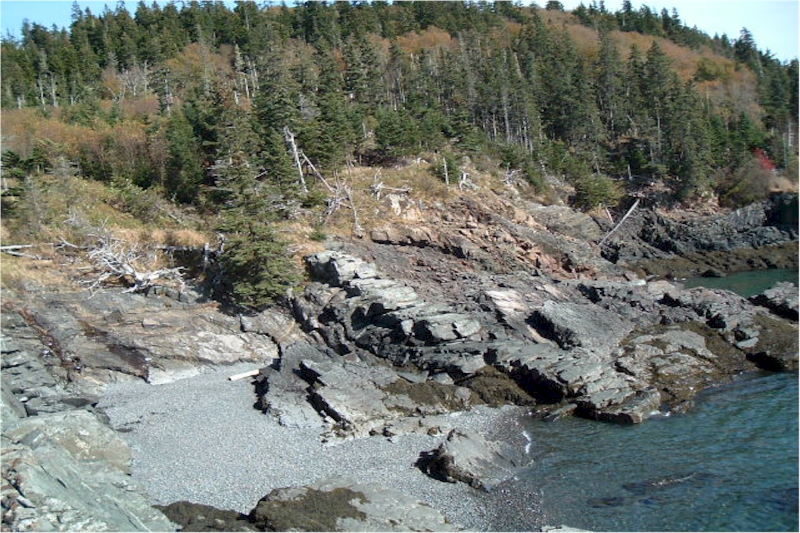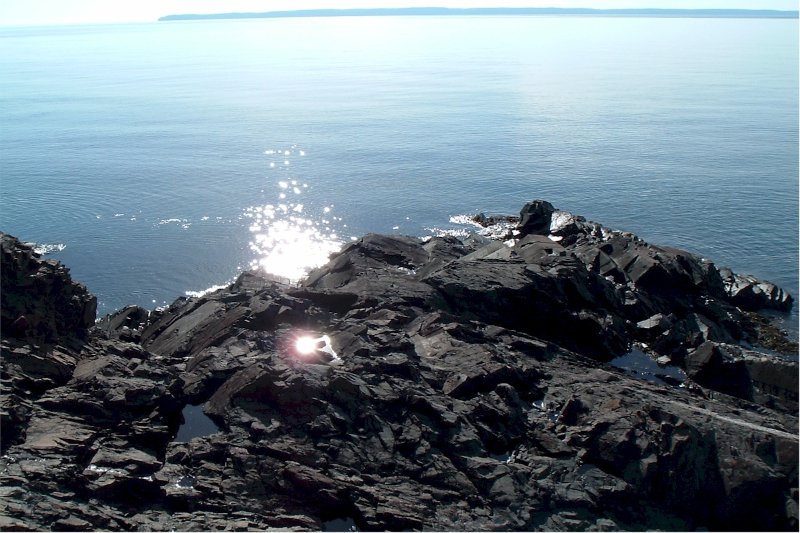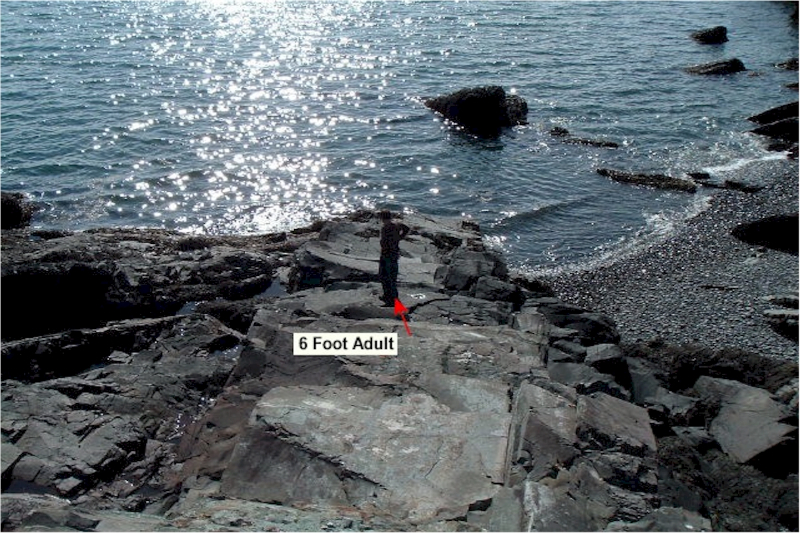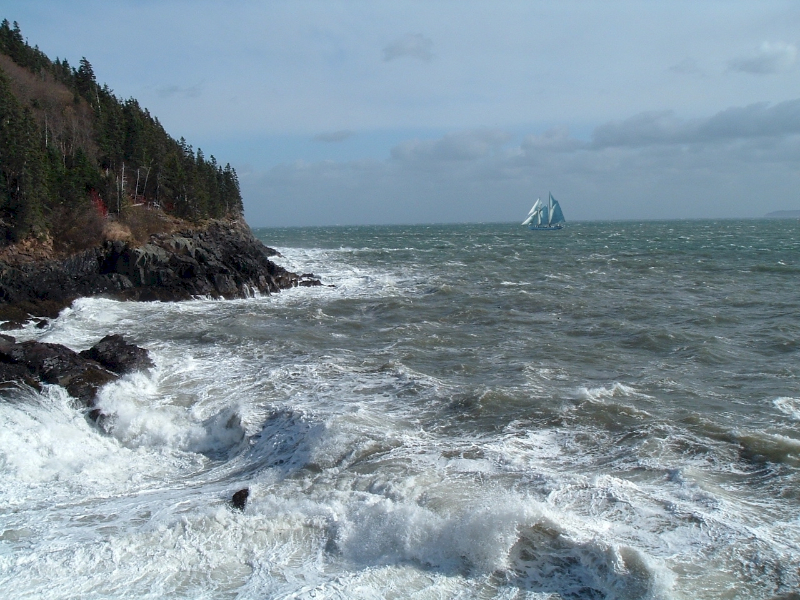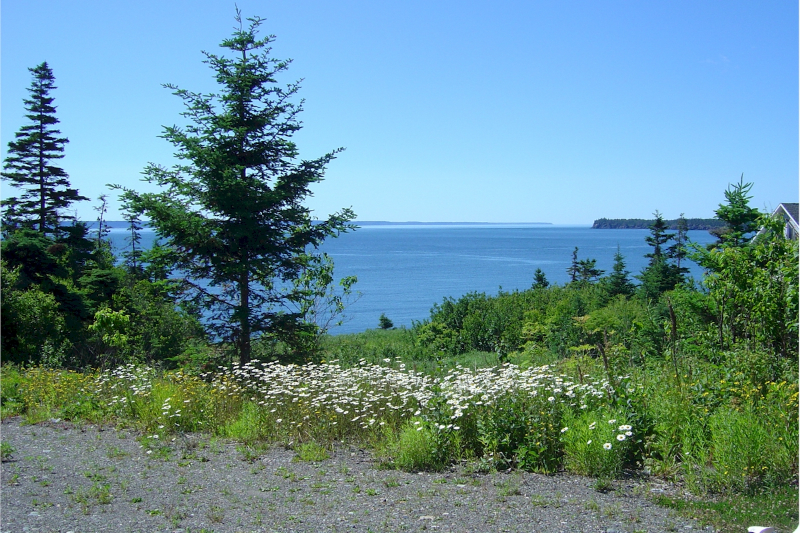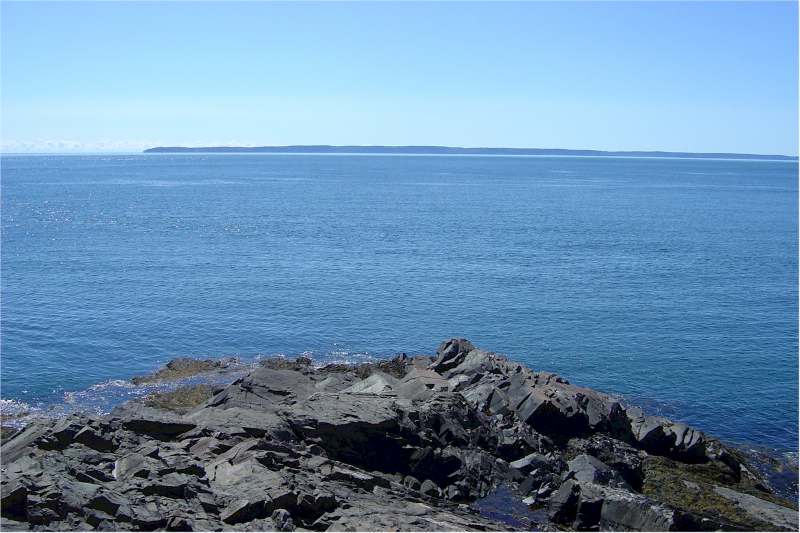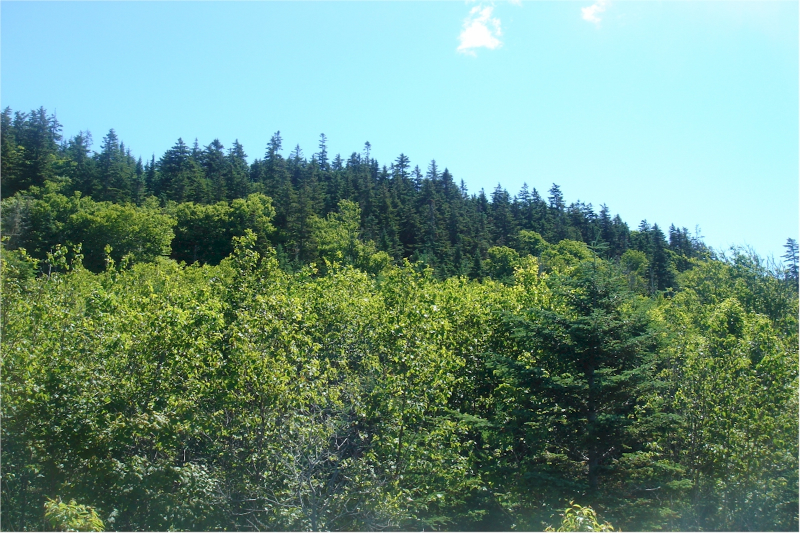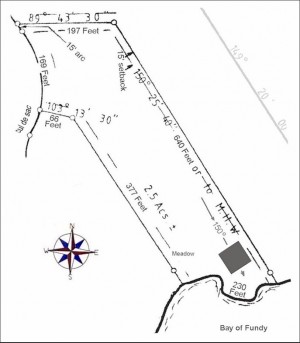230 Feet of BOLD OCEANFRONT Property on 2-1/2 Acres For Sale
Truly a once-in-a-lifetime opportunity.
Campobello Island is perhaps one of the last opportunities you might have to own a slice of Heaven (while still living, that is). This is because even though Campobello Island is like an extension of the Maine coast, it is actually in Canada. All you need is a valid passport and you are free to cross back and forth as many times as you please. You can stay the night, stay a season or build your own home.
Click To Enlarge
North to Canada, for an Ocean View
By LOUISE TUTELIAN ROBIN RYAN’s sky-blue chalet is a mile down a red dirt road and directly on the water. “Don’t look at the whole view until you get in the house,” she says, leading the way inside. Glass and beams rise to a vaulted 22-foot ceiling. Amber knotty-pine timbers form a cathedral-like nave in the living room. Sunlight bleaches the white walls. And there, centered in windows spanning floor to ceiling, like a watercolor in a frame, is the deep blue of the sea. French doors open onto a 30-by-40-foot deck outfitted with a full complement of teak tables, chaises and chairs and a dozen indigo pots of lipstick-red geraniums. A luminous green lawn stretches along 900 feet of oceanfront; four wooden steps lead down to the lapping waves. Another gazillion-dollar beach house on the California coast? Cape Cod? Kiawah Island? No. This is eastern Canada, and Ms. Ryan, who lives in Worcester, Mass., bought her contemporary house on six waterfront acres on Prince Edward Island in September 2004 for $229,000, the equivalent of 300,000 Canadian dollars at the time. Once dismissed as too chilly, too rocky or just too far away, New Brunswick and Prince Edward Island are increasingly in the sights of Americans priced out of beach houses at home. They are drawing buyers from as far away as Florida, California and Texas. Seaside cottages, Victorian-style homes, town houses, rustic ranch-type houses, golf-course houses and parcels of ocean frontage are all for sale if you’re willing to go up, up and away – at least 500 miles north of Manhattan – and east into the Atlantic time zone. Americans are also buying in Nova Scotia, a neighboring Maritime province, but their interest there is longstanding. Ms. Ryan, who owns a driving school, found her Prince Edward Island house on the Internet, drove 11 hours from Worcester to see it and made an offer on the spot. Renting out the house half the summer helps defray the costs. Over the Confederation Bridge in Pointe-du-Chêne, New Brunswick, 180 miles from the Maine border, Jeff and Jean Johnson of Portland, Me., were surprised when they spent a weekend last summer visiting friends. “I was shocked at how warm the water was, considering how cold it is in Maine,” said Mr. Johnson, 42, a sales manager for Waste Management Inc. Warm currents, shallow depth and sandbars warm the waters of the Northumberland Strait, where Pointe-du-Chêne is situated, to 75 degrees in July; in Old Orchard Beach, Me., the July water temperature is a brisk 64 degrees. Near the town are Parlee Beach Provincial Park, with a three-quarter-mile stretch of sandy protected beach, and Shediac, the self-proclaimed lobster capital of the world, where the local McDonald’s offers a McLobster Roll. By last month, Mr. Johnson, his wife, Jean, and their daughters Meredith, 9, and Kate, 7, were ensconced in their own new three-bedroom, 1,250-square-foot ranch-style house, a 10-minute walk from the beach. Last December, they paid $115,000 (133,000 Canadian dollars) and added a patio and deck. “We’ll be up three or four weeks this summer,” Mr. Johnson said, padding around his new patio in bare feet and camouflage cargo shorts to fire up his new grill. “I feel this is a very undiscovered area and certainly undervalued. I don’t think people have thought of it yet as a potential home.” That’s starting to change. “The demand keeps getting larger every year,” said Vicki Kurkowsky of ReMax Quality Real Estate in Moncton, New Brunswick, the nearest large city, and teardowns of rundown cottages are increasingly common in her area. She shows properties to three or four Americans each season, she said, and of those, one buys. More Americans have been looking each year. New Brunswick is east of Maine, and the Bay of Fundy runs down its southeast shoulder, with Nova Scotia on the other side, bordering the North Atlantic. Just north of both is 140-mile-long Prince Edward Island, a puffy green comforter of an island embroidered with flowers and farms and ribboned with empty roads, some of them still red clay. The Confederation Bridge, an eight-mile span completed in 1997, crosses the Northumberland Strait to link Prince Edward Island and New Brunswick. (Some of the island’s 138,000 residents say they still miss the ferry they used to rely on.) Summer temperatures on Prince Edward Island and New Brunswick, which has a population of about 750,000, routinely reach the high 70’s, often with a pleasant breeze. And together they have hundreds of miles of coastline. “The primary thing my clients are looking for is oceanfront,” said Michael Poczynek of Century 21 Northumberland Realty on Prince Edward Island, who has sold 20 waterfront properties to Americans in the last six months, about half of his total sales. And although these properties are not the rock-bottom bargains of five years ago when the American dollar was stronger, the current exchange rate of about 1.12 Canadian dollars to $1 still represents a discount. Property values have risen 10 to 15 percent a year since 2002, according to real estate agents, though the increase has slowed in recent months. As long as an American buyer uses a Canadian lawyer and a Canadian bank for any mortgage, transactions are usually simple, and the buyer doesn’t have to attend the closing. Foreigners pay some additional property taxes, and there are limits on the amount of shore frontage a single buyer may acquire in some areas. These restraints seldom deter those who have searched in vain for vacation homes farther south. Not everything is resort-like. In some parts of the New Brunswick coast on the Northumberland Strait, commercial fishing boats are moored, and a pungent scent of seaweed and dead mussels permeates at low tide. Other parts have the age-old attractions of all beach towns: stores touting floats and kayaks, miniature golf courses, ice cream chain shops and banana-boat rides. Prince Edward Island still retains much of the rural character portrayed by Lucy Maud Montgomery in “Anne of Green Gables,” the popular book that is many Americans’ only association with the island. Along the Bay of Fundy off New Brunswick to the south, the water barely gets to 63 degrees in summer. But American buyers are crossing the border there, too – nearly always looking for land with a water view. Kathleen Constable’s yellow and white Victorian-style cottage is on a small lot overlooking Passamaquoddy Bay in the village of St. Andrews, some 20 miles from the border crossing at Calais, Me. Sailboats sit at moorings virtually outside her door. Ms. Constable, 60, an author and former professor of English from Frederick, Md., and her husband, Tony, a technology consultant, bought the house – a three-bedroom, three-bathroom cedar-shingle cottage with a flagstone walk – in June for $340,000 (375,000 Canadian dollars). “There seems to be a steady trickle of Americans coming in,” Ms. Constable said as she sat in her knotty-pine-and-white living room, cuddling her watchful toy poodle, Joey. “We were amazed. Everything we saw in Maine started at $800,000.” License plates from Massachusetts and Maine (a good number affixed to Volvos and Land Rovers) are common in St. Andrews, and a few from Virginia and Pennsylvania are starting to appear. George Matthews of Coastal Realty in St. Andrews has sold 40 properties to Americans in the last year out of his office alone in towns all along the Bay of Fundy – and in it, on Campobello Island (Franklin D. Roosevelt’s summer retreat) and Grand Manan Island. The sales represent nearly 75 percent of his business. “Buyers can’t afford the Cape, the Vineyard or Maine anymore,” he said. “My husband and I are completely insane,” said Erin O’Keefe, a Manhattanite who owns a second home on Grand Manan, which is accessible only by ferry. Ms. O’Keefe, 43, a professor of architecture at New York Institute of Technology – with her husband, Chris McCready, an architect, and their daughters Nora, 9, and Aidan, 5 – travels 13 hours to reach the house. It’s a 1947 gray Cape Cod-style house with red trim and has three bedrooms, two fireplaces and an unobstructed view of open water from its two decks. It sits on seven acres of oceanfront land, though the family can’t swim from their own rocky deep-water shoreline. The couple bought the house three years ago and will not disclose the price other than to describe it as good. “When you get up there, it’s all worth it,” said Ms. O’Keefe, who fills the family’s days with birding and whale-watching, fishing, reading and trips to the bakery and the beach for two months each summer. “The water is very cold,” she confessed. “But that doesn’t stop people or kids. And there are always wetsuits.” The Canadian beach season is short – eight weeks is about it – though a few families squeeze in September. The beaches are often rock or clay. The distances can be long, but for Americans buyers, the combination of low prices, beautiful views and the laid-back pace more than fills the gap. “We had a family gathering here last year, about 60 people including family and new friends from the island – we put a tent up here on the lawn,” said Ms. Ryan, the driving school owner from Worcester, gesturing toward the grass. “There was volleyball and softball set up. We had lobster, mussels and chowder. Everyone had a great time.” So great, in fact, that Ms. Ryan’s sister, a brother-in-law and a friend all bought their own properties nearby. “They call me the Pied Piper of P.E.I.,” she said.

